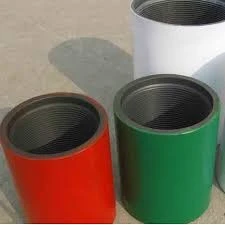- Afrikaans
- Albanian
- Amharic
- Arabic
- Armenian
- Azerbaijani
- Basque
- Belarusian
- Bengali
- Bosnian
- Bulgarian
- Catalan
- Cebuano
- Corsican
- Croatian
- Czech
- Danish
- Dutch
- English
- Esperanto
- Estonian
- Finnish
- French
- Frisian
- Galician
- Georgian
- German
- Greek
- Gujarati
- Haitian Creole
- hausa
- hawaiian
- Hebrew
- Hindi
- Miao
- Hungarian
- Icelandic
- igbo
- Indonesian
- irish
- Italian
- Japanese
- Javanese
- Kannada
- kazakh
- Khmer
- Rwandese
- Korean
- Kurdish
- Kyrgyz
- Lao
- Latin
- Latvian
- Lithuanian
- Luxembourgish
- Macedonian
- Malgashi
- Malay
- Malayalam
- Maltese
- Maori
- Marathi
- Mongolian
- Myanmar
- Nepali
- Norwegian
- Norwegian
- Occitan
- Pashto
- Persian
- Polish
- Portuguese
- Punjabi
- Romanian
- Russian
- Samoan
- Scottish Gaelic
- Serbian
- Sesotho
- Shona
- Sindhi
- Sinhala
- Slovak
- Slovenian
- Somali
- Spanish
- Sundanese
- Swahili
- Swedish
- Tagalog
- Tajik
- Tamil
- Tatar
- Telugu
- Thai
- Turkish
- Turkmen
- Ukrainian
- Urdu
- Uighur
- Uzbek
- Vietnamese
- Welsh
- Bantu
- Yiddish
- Yoruba
- Zulu
Exploring the Importance of Casing Pup Joints in Oil and Gas Operations
Understanding Casing Pup Joints in Oil and Gas Operations
Casing pup joints are an essential component in the oil and gas industry, specifically in wellbore construction and maintenance. As the exploration and extraction of hydrocarbons continue to advance, the significance of proper casing design and implementation becomes increasingly critical. In this article, we will explore the function, design, and application of casing pup joints, along with their importance in drilling operations.
What are Casing Pup Joints?
Casing pup joints are short sections of pipe used in drilling operations to connect other components of a well casing string. Typically, these joints are much shorter than standard casing pipes and can vary in length, usually ranging from 2 to 10 feet. They are primarily used to adjust the length of the casing string as well as accommodate specific well conditions.
Functions of Casing Pup Joints
The primary function of casing pup joints is to provide flexibility and adaptability to the casing string, which is critical during drilling operations
. Here are some of their key functions1. Length Adjustment As the depth of the well changes, the use of pup joints allows operators to customize the length of the casing string to match the specific depth requirements without having to manufacture entirely new lengths of casing.
2. Facilitate Connection Pup joints serve as connectors between longer sections of casing, ensuring a secure and tight fit that helps maintain the integrity of the casing and prevent leaks.
3. Alignment and Spacing When aligning multiple sections of casing, pup joints can provide the necessary spacing to ensure proper alignment and functioning of the wellbore apparatus.
casing pup joint

4. Mitigating Stress The inclusion of pup joints can help to distribute the stress applied to the casing string evenly, thereby reducing the risk of damage or failure during drilling operations.
Design Considerations
The design of casing pup joints is crucial to their effective performance. Factors such as material selection, wall thickness, and thread type are meticulously considered. Typically made from high-strength steel, pup joints must withstand extreme pressures and temperatures encountered in the oil and gas environment.
Additionally, the threading used for the joints is often unified or made according to standards such as API (American Petroleum Institute) to ensure compatibility with other casing sections. The choice of the right thread type, whether it be API external or internal threads, affects the overall integrity and performance of the wellbore.
Applications in Drilling Operations
Casing pup joints find extensive application in various drilling scenarios. They are frequently used in both onshore and offshore drilling, providing essential support for both vertical and horizontal well schemes. Their versatility makes them suitable for transitioning between different casing sizes or adapting to irregular well profiles.
In horizontal drilling, for instance, pup joints can be indispensable in accommodating changes in angle and direction, ensuring that the casing fits well in the different orientations of the wellbore. Moreover, during well completions, casing pup joints can assist in the installation of specialized equipment, such as safety valves and production packers.
Conclusion
In conclusion, casing pup joints play a vital role in the oil and gas industry, providing adaptability, structural integrity, and support during drilling operations. As technology continues to evolve, the efficiency of casing pup joints also improves, allowing for safer and more effective extraction of hydrocarbon resources. Understanding the design, function, and applications of these critical components not only aids in optimizing drilling performance but also enhances overall operational safety and efficiency. The successful implementation of casing pup joints highlights their necessity in modern drilling practices, ensuring that the energy sector continues to meet global demands for oil and gas.
-
Well Casing Extension Couplings – Applications and InstallationNewsJun.06,2025
-
Types of Crossover Subs in Drilling & CompletionNewsJun.06,2025
-
Key Features of High-Quality Tubing Pup JointsNewsJun.06,2025
-
Installation and Maintenance Tips for Steel Couplings for PipeNewsJun.06,2025
-
How to Select the Right Pup Joint for Oil & Gas OperationsNewsJun.06,2025
-
Applications of Stainless Steel Pipe CouplingsNewsJun.06,2025







